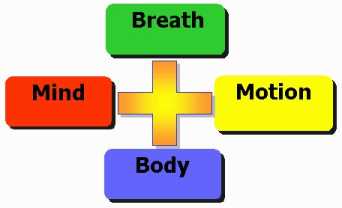
Yesterday, I stated that I would be writing a series on subjects related to my project of "diminishing the waistline and increasing my cognitive abilities." I was asked several questions; one being "Why start with brain waves?" My answer, "Why not? This is not a linear process. We can begin anywhere."
CONTROL YOURSELF
Stop a moment. Now, change your brain wave activity into an alpha rhythm. . . . The question immediately arises, How? How do I know when my brain waves are in alpha? And how is it possible to change my brain waves intentionally?
One of the central assumptions of western physiology has been that there is a fundamental distinction between parts of the human body that we can consciously control--the so-called "voluntary" components--and those parts over which we have no conscious control--the "involuntary" or autonomic components. These involuntary components traditionally included brain waves, as well as such things as the expansion and contraction of our blood vessels, blood pressure, heart rate, the secretion of hormones, healing and the activity of the immune system.
Yogis also study physiology from a different point of view, however. Yogis know through experience that the body controls the mind, the mind controls the body and all controls and is is controlled by the spirit. The hatha yoga asanas (postures), which are taught in the local recreation center, for example, give people a healthy body and make them 'feel good'. These asanas, of which there are 2000+/-, are designed for specific purposes. I have observed that most of the asanas taught at the local rec center are those, which have the purpose of stimulating the endocrine system. The hormones from the endocrine system feed your brain (and other organs) and this is what makes you 'feel good.'
I am not one, who practices hatha yoga daily. I regard the asanas as tools and have a accumulated some tools, which I have found to be usefull, when needed. As I see things, if the only tool one has is a hammer, one tends to treat each situation as if it was a nail. The many branches of yogic practice provide many different tool boxes, from which I will be selecting the tools necessary for trimming the waist line and enhancing cognitive function.
So, to return to brain waves : Controlling one's brain waves and controlling one's autonomic system are skills, which you need to learn. These skills can not be taught; they need to be learned. There are methods to induce and enhance the learning process and I will be attempting to adapt those methods to the internet, with your assistance.
I learned to control my autonomic system long before I became interested in yoga psychology and philosophy. For 25 years, I was a long distance runner... the longer the better, because I was addicted to the endorphins produced by the body. Every long distance runner learns to "hit the wall," the point where the body refuses to function, and go through the wall. Once through the wall, you feel like you can run forever! A runner learns to do this by regulating his breathing with his pace. By regulating breathing, one controls the one's heart rate. The heart pumps four times for each breath. Every distance runner develops his own refinements to technique. I learned that I had more endurance, if in addition to breath, heart rate, blood pressure control, I held my fingers curled in a certain way. When I began to get interested in yoga, I learned that the breath control was called pranayama, a skill for which some people call me a master. And, the holding of my fingers in a certain way was the practice of mudra.
You may be asking yourself, if you want to learn these skills. After all, very few people enjoy endurance sports. For me they are usefull skills, in my daily life. For example: A few months ago, I needed surgery to remove a growth from my left eye. The growth, I think, was a result of my kayak ventures in Africa. When I was being prepared for surgery, an anesthetist began to get me ready for anesthesia. I refused anesthesia, explainng that her drugs had very little effect on me and to induce the state required, she would need to give me a very dangerous dose. I preferred to induce the state, with my methods. She consulted with the surgeon and we all agreed that the anesthetist would monitor my vital functions and intervene only if necessary. During surgery,an alarm on one of the electronic monitoring devices sounded. I asked what the alarm indicated and was told that my systolic pressure had dropped too low. I told them not to worry, I'd raise it. Within seconds, the alarm stopped.
After surgery, I was wheeled into an area, for what in French is called 'reanimation', which was filled with surgery patients in a zombie state. I simply got up, dressed and was ready to drive home, when the anesthetist came to check my vital signs. She is very interested in learning more.
Had the anesthetist looked at her monitor, she would have seen that my brain waves were almost all theta, with overtones of alpha. I was in a state of hyper-awareness; the exact opposite of narcosis. This hyper-awareness, as everything, has positives and negatives. I thought she was an extremely attractive woman, until I put myself into hyper-awareness, and then, I could smell her aura of stale cigarettes, ugh!!
I chose the above example for its timeliness... the growth has returned and I see the surgeon this afternoon.
